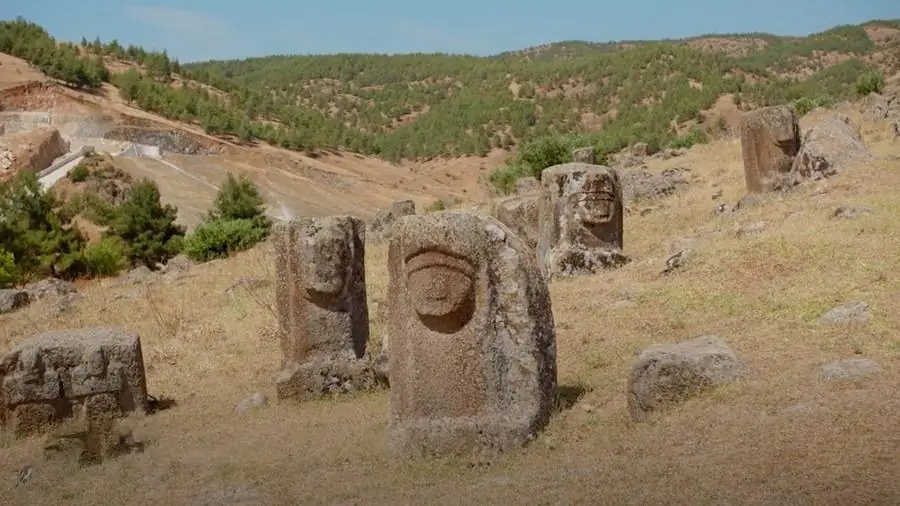Between the end of the second millennium BC and the beginning of the eighth century BC, Yesemek was the largest quarry and sculpture workshop in the Near East. It is situated southeast of the Islahiye District in the province of Gaziantep, close to Yesemek Village.

When the area was ruled by the Hittites in the 14th century BC, under Emperor Suppiluliuma I, the workshop where the Hurrians who lived nearby worked was in operation. In this instance, the importance of Hittite, Syrian, Aramaic, and Assyrian art elements increased.
The Aegean cultures that started to emerge in the West were influenced by this Orientalism style, which became the central element of Greek art. Everything at Yesemek was left exactly as it was at the location where time appeared to have stopped until it was discovered in 1890.
♦ 6 Days Turkey Tour – Best Turkey Tour Package
The Assyrians stopped all operations at the end of the eighth century BC and removed its masters and artisans to Assyria. Scientific excavations were conducted by Turkish archaeologists in the 1950s and 1960s.
More than 300 sculpture sketches, the bulk of which are composed of red basalt, have been uncovered and are on display at the archeological site, which is currently an outdoor museum. Exhibited in their natural settings are sphinxes, gate lions, seated lions, winged lions, reliefs of the Mountain Gods, battle scene reliefs, and architectural components.
Yesemek Quarry and Sculpture Workshop, close to Yesemek Village, is thought to have been a singular ancient sculpture school, where students could observe the entire process of creating a sculpture, from roughening out the stones to polishing and finishing it on location. This demonstrates the value that the communities in Anatolia at the time placed on art.

